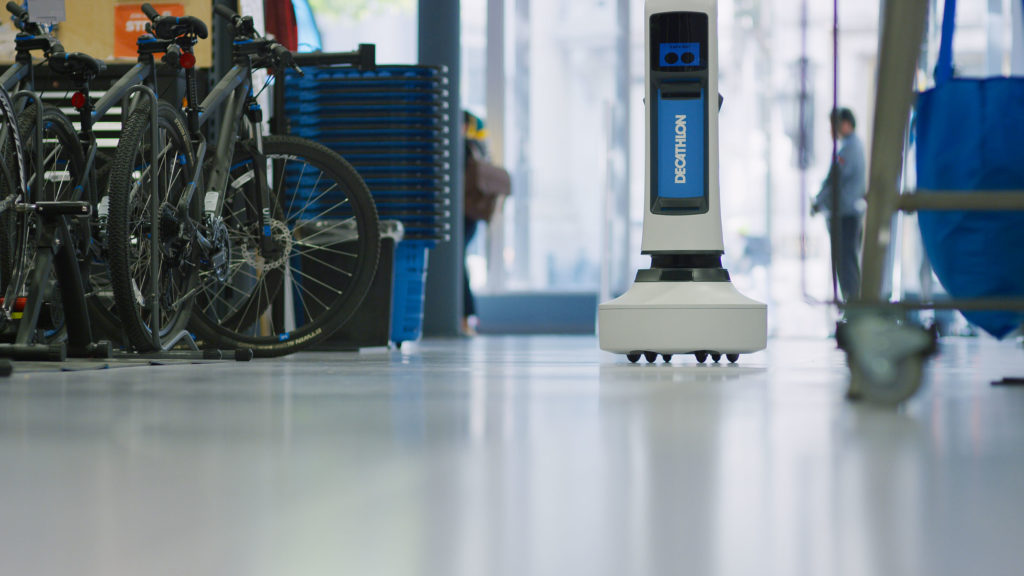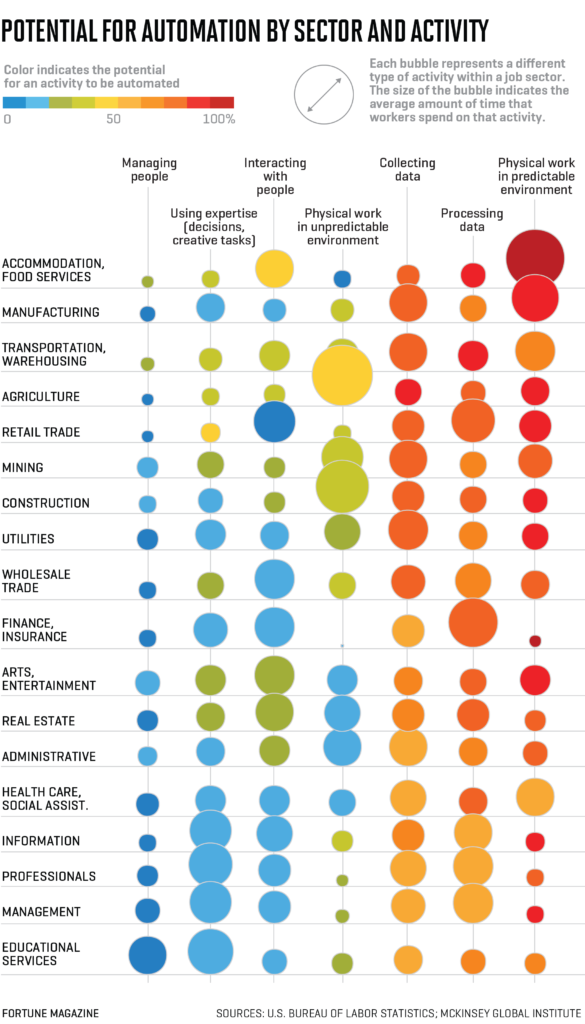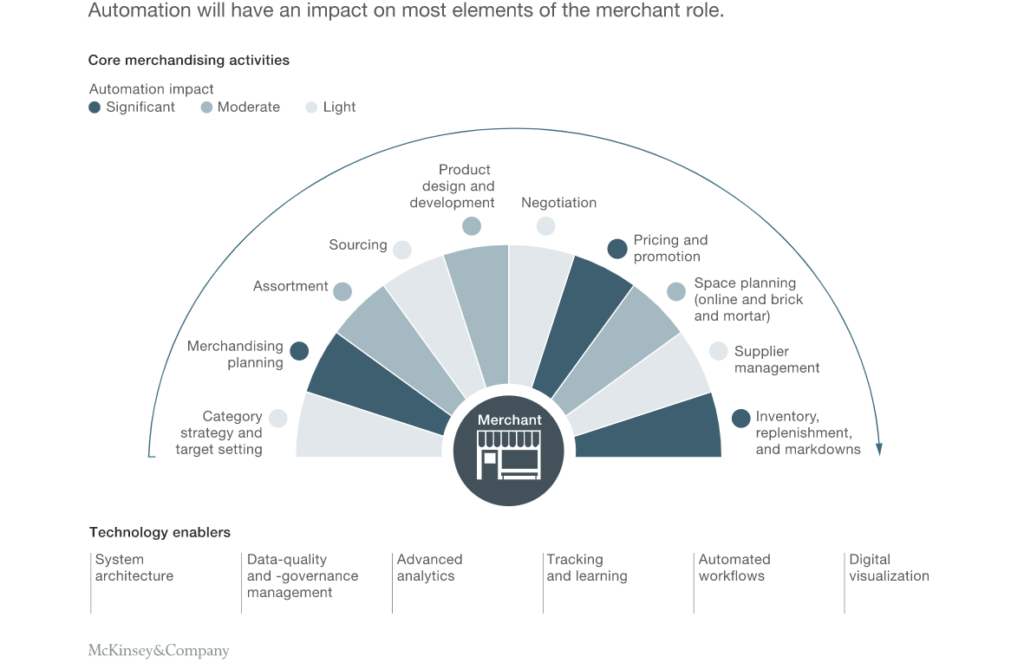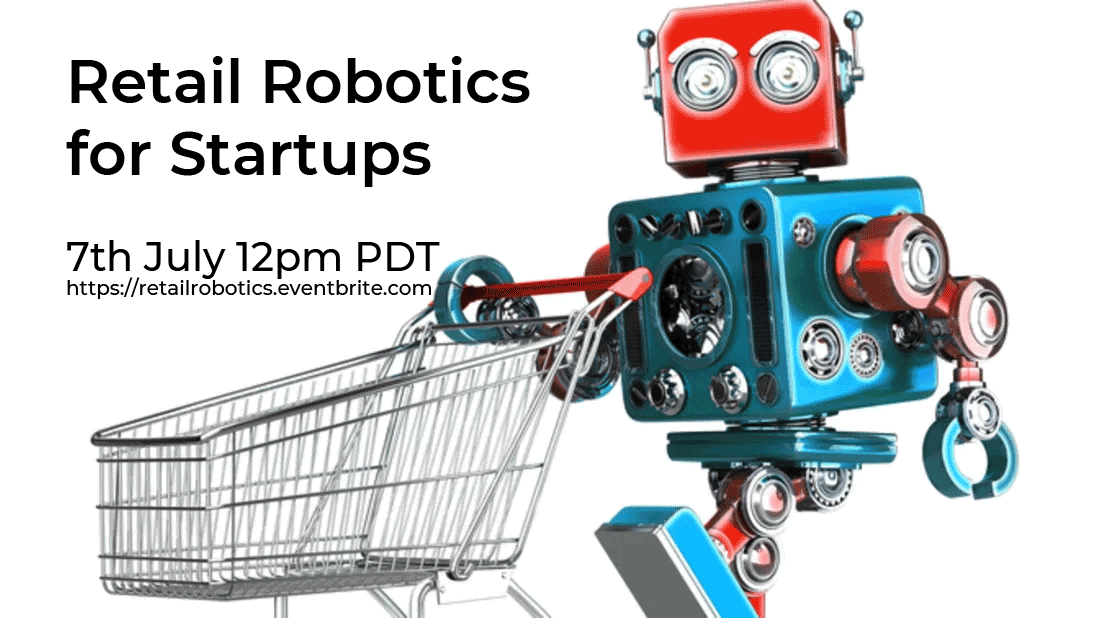Retail is the fastest growing industry sector for robotics, if we include the logistics associated with e-commerce, and the current pandemic is exacerbating the demand for and shortage of robotics. On July 7th Silicon Valley Robotics hosted a ‘Retail Robotics for Startups’ discussion with David Pakman, robotics investor at Venrock, Steven K. Platt, founder of the Platt Retail Institute and the Retail Robotics and AI Lab for the Retail Analytics Council, and Deborah Weinswig, founder of Coresight Research and globally renowned retail analyst.
David Pakman talked about some of the macro pressures driving automation adoption across five main sectors, industrial, warehouse and logistics, retail, agriculture and health, where the falling price of robots is creating an elastic market with increasing demand. In retail automation alone, the market forecasts show about a 12 or 13 Billion USD market which is forecast to double to about 24 Billion USD by 2026. This is largely driven by supermarket growth, and so Venrock has invested in Simbe Robotics, a Silicon Valley robotics company doing inventory scanning inside of stores like Schnuck Markets and Giant Eagle.
“Retail is an industry where the cognitive bias is to solve problems with humans, not robots.”
David Pakman @Venrock
Founded in 2014, Simbe has emerged as the leading data-driven inventory solution for physical retailers, with Tally taking the lead as the first fully autonomous robot currently performing multiple store traversals per day – alongside customers during regular hours of operation – and executing a variety of inventory auditing tasks. Using both computer vision and RFID scanning technology, Tally provides retailers and their global CPG brand partners with actionable, e-commerce-level insights into shelf data up to three times per day.

What Simbe and Venrock learned from store operators was that there are plenty of essential retail tasks that humans are not very good at, and that store operators would rather not pay people to do. As Pakman said, “For instance, checking store shelves to see what is on the shelf and what’s not. Humans get very bored by this job. It’s painfully monotonous. And store owners would much rather have humans talk to the guests or the store shoppers and help them out and walk around with an iPad or a clipboard and try to see what’s missing from shelves.”
Also, David Pakman counseled tech entrepreneurs to better understand their customer, “In general, retailers don’t wake up every morning and say, What problem can I solve with technology today? Whereas in tech companies, we wake up every morning and say, What problem can I solve with technology today, which is why tech companies are huge consumers of tech. The default mode of solving problems in retail is with people, although as a sector it’s becoming much more innovative, particularly since Apple opened their stores and offered a completely different shopping and checkout experience.”

Deborah Weinswig pointed out that comparatively speaking retailers were early adopters of robotics, compared to some other technologies, like AI, and that the physical nature of robots was a big enabler to this early adoption. Retailers could really see the technology in action, and have been correspondingly more open to it regardless of whether it’s a capital expenditure or a ‘Robot-As-A-Service’ offering.
This was seconded by Steven Platt who shared that historically the data on retail over the last 10 to 15 years was that retail was conservative in investing in technology. “Supermarkets have extremely low, low operating margins, so they’re very pennywise and pound foolish. Most of them still approach investments in technologies thinking of the ROI rather than thinking about things like throughput and efficiencies, and deploying workers to other more efficient tasks and functions. COVID has really pushed a lot of folks towards robotics though.”
Robotics needs to focus on standards, for data, for communication, for maps, even for charging.
STEVEN K. Platt @PRI_US_EU
One of the initial reasons to adopt robots was solving the ‘out of stock’ issue, where if an item is in the back of the store instead of on the shelf, then it can’t be sold, as Deborah Weinswig pointed out. This really started the conversation about efficiencies. “‘Buy online, pick up in store’ was just a conversation starter in 2019, but it has become a must have in 2020.”

All three speakers shared good advice for robotics startups that are looking to the retail sector, either front of store or back end logistics. David Pakman pointed out that purchase decisions usually come from the CEO not the Head of Innovation. Steven K. Platt pointed out that the rapid expansion of robots into retail meant that some consolidation was starting to happen at store level and that customers would drive the adoption of common standards unless the industry was proactive. Finally, Deborah Weinswig pointed out that all retail startups should spend time listening to earnings calls in order to better understand the customer.
Robotics startups should listen to customer’s earnings calls to better understand the issues.
Deborah Weinswig @coresightnews

